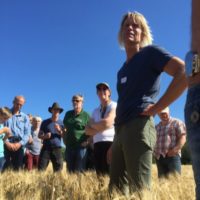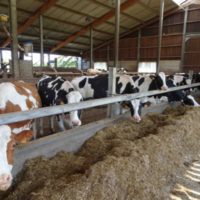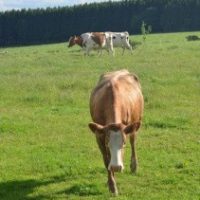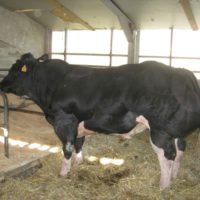How to cope with a drier climate?
Practice abstract
Description
This practice and science meeting was conducted at Borgeby Field Days, the largest open fair in Sweden. It was already very dry in Sweden at the time of the event, and the demonstration plots with different grass species were very drought-stressed. One of the innovative farmers came from an area that is more or less dry every year, Åke Johansson from Färjestaden in the south-east. He has developed a method to establish leys under dry conditions. The goal is to have no more than half a day from tillage start on ploughed ground until sowing is finished. The solution is a harrow fitted with a mounted small seeder for grass mixtures. It was designed for this farm six years ago, to achieve quicker ley establishment and avoid drying out the soil. After harrowing, the farmer uses a centrifugal fertiliser spreader for sowing barley. Then he harrows to 3 cm depth and rolls in one pass, and after this sows the ley using the same machinery.
Lucerne and tall fescue with hybrids were also subject of intense discussions, as they are considered to be more drought tolerant than other species. However, the conclusion was that with such a dry summer as in 2018, it would not help to have these species. In the past lucerne was used in pure stands, but now it is mixed with more fast-establishing grass/es to better control the weeds. He needs to buy un-mixed grass and lucerne to be able to make a proper lucerne inoculation.
Additional information
| Farming system | conventional farming |
|---|---|
| Domains of innovation | farm system, forage mixture, machinery, tools |
| Main types of animal | dairy cattle |
| Country | Sweden |
| Product type | Practice abstract |
| Language | English |






